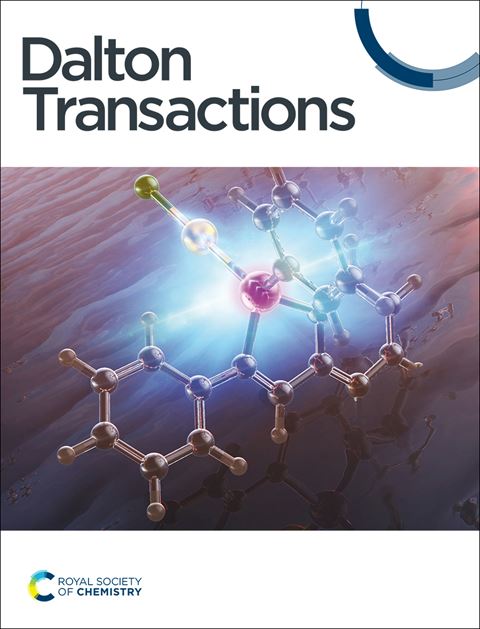Synthesis of [Os(bpy)2(py)(OH2)](PF6)x Substituted Pyridine Complexes; Characterization of a Singly Bridged H3O2− Ligand
IF 3.5
3区 化学
Q2 CHEMISTRY, INORGANIC & NUCLEAR
引用次数: 0
Abstract
Proton-coupled electron transfer (PCET) underpins energy conversion processes in biological systems and fuel-forming reactions. Interrogation of the dynamics of electron and proton transfer in PCET processes requires tunable models, with synthetic transition metal aquo complexes being particularly well-explored examples. A previous study on a PCET model, [OsII(bpy)2(py)(OH2)]2+ (bpy = 2,2'-bipyridine; py = pyridine), reported synthetic intractability which limits access to this class of models. Herein, we report an improved protocol to synthesize a family of [OsII(bpy)2(py)(OH2)]2+ complexes enabling the modular tuning of the pyridine ligand with electron-donating or -withdrawing groups on the para-position. The modification of the electron density about the osmium center is reflected in Hammett plots of half-wave peak potential for the OsII/OsIII couples and pKa values of the coordinated water. Moreover, a hydrogen-bonded osmium dimeric structure featuring a short, strong hydrogen bonding network in the solid state was observed; we find the dimeric Os structure is likely not maintained in solution. Our work expands access to osmium aquo complexes and provides a venue to understand how modification of supporting ligands can influence PCET processes.求助全文
约1分钟内获得全文
求助全文
来源期刊

Dalton Transactions
化学-无机化学与核化学
CiteScore
6.60
自引率
7.50%
发文量
1832
审稿时长
1.5 months
期刊介绍:
Dalton Transactions is a journal for all areas of inorganic chemistry, which encompasses the organometallic, bioinorganic and materials chemistry of the elements, with applications including synthesis, catalysis, energy conversion/storage, electrical devices and medicine. Dalton Transactions welcomes high-quality, original submissions in all of these areas and more, where the advancement of knowledge in inorganic chemistry is significant.
 求助内容:
求助内容: 应助结果提醒方式:
应助结果提醒方式:


